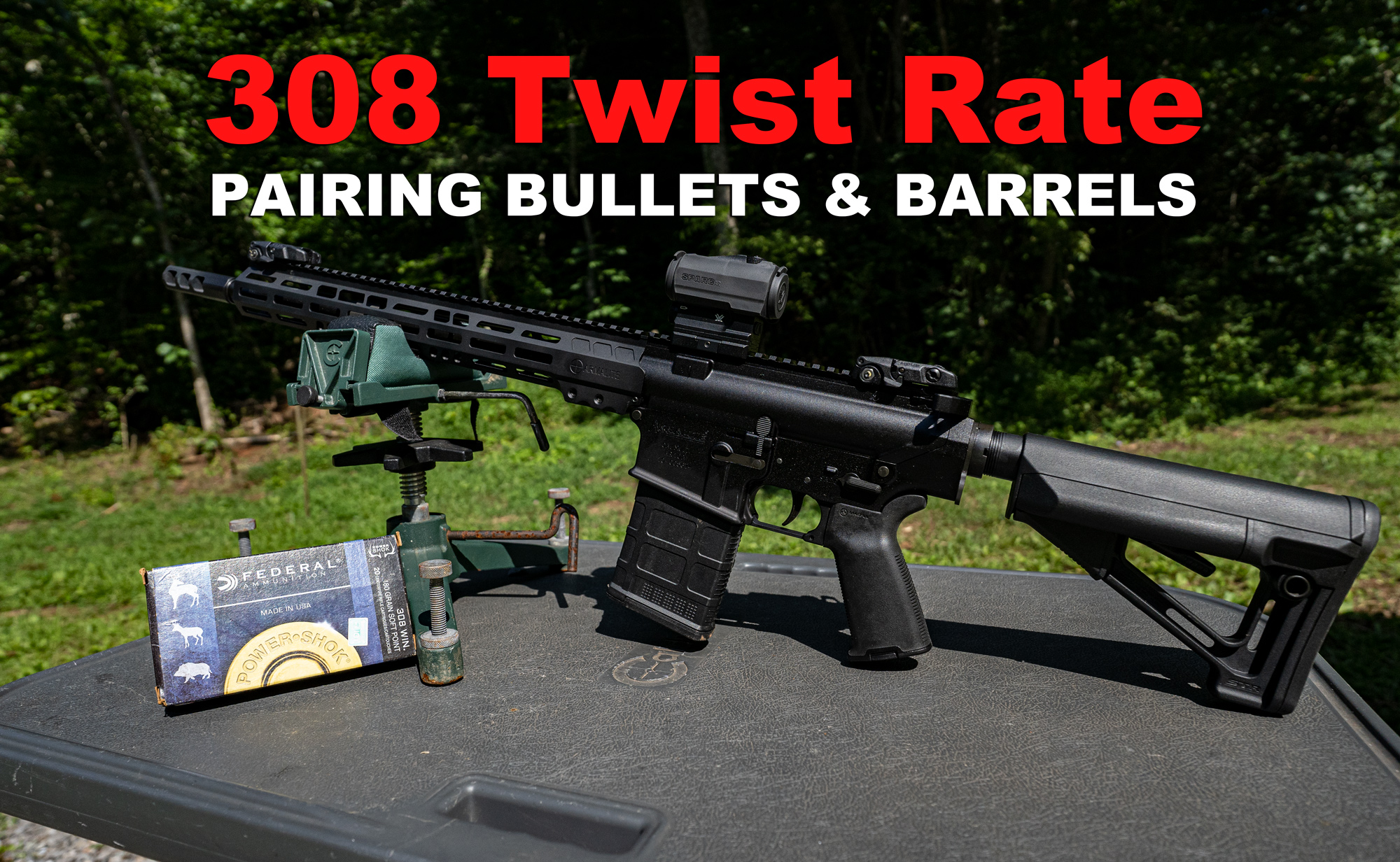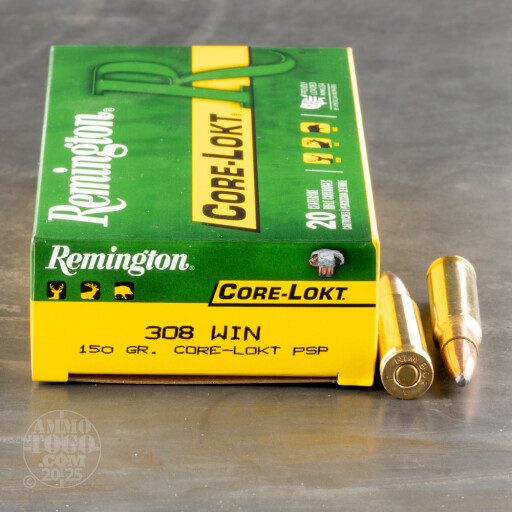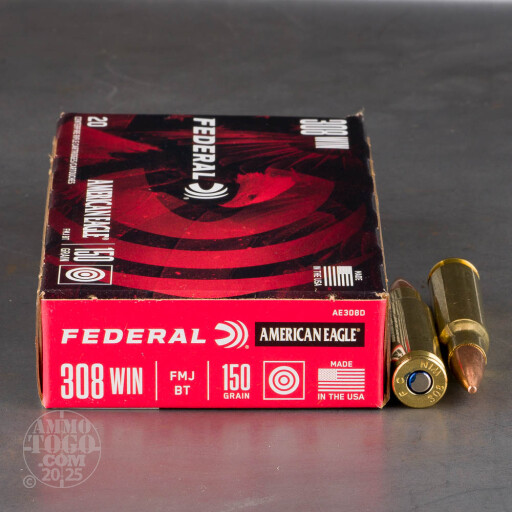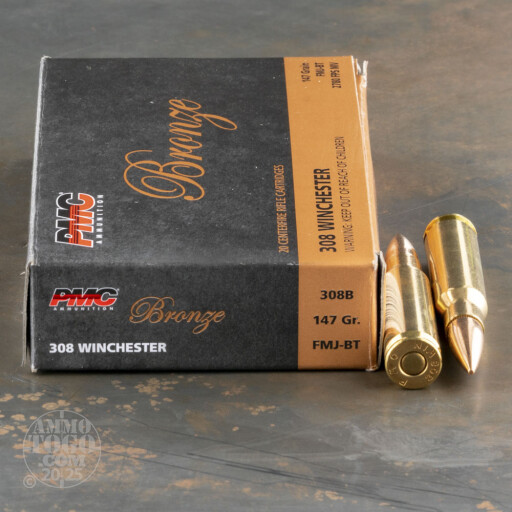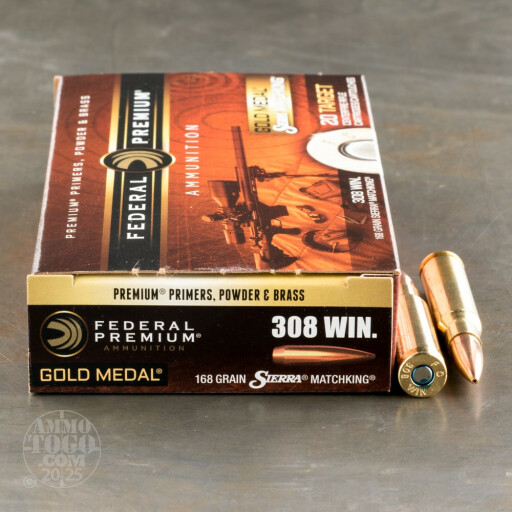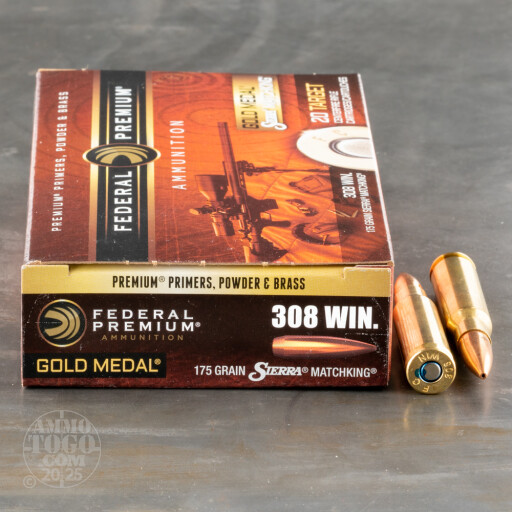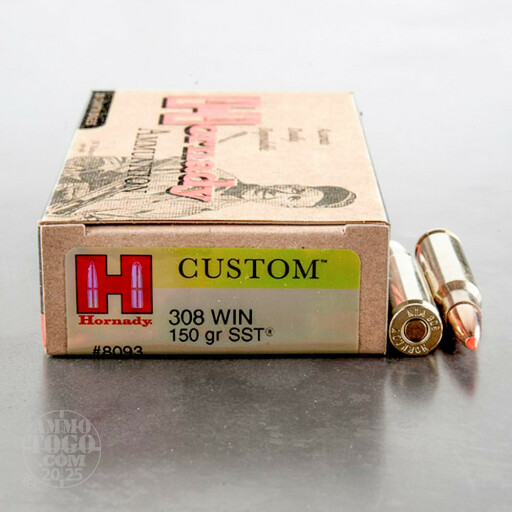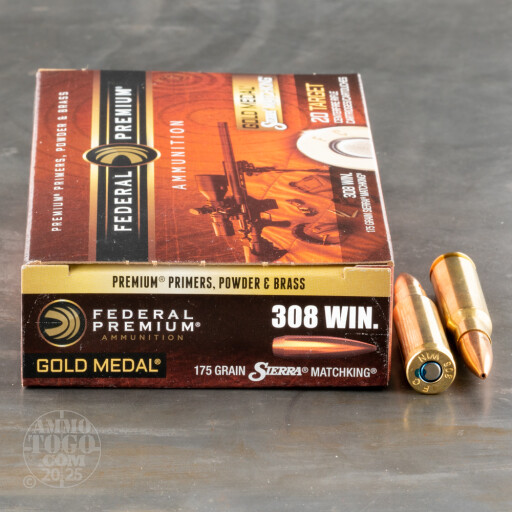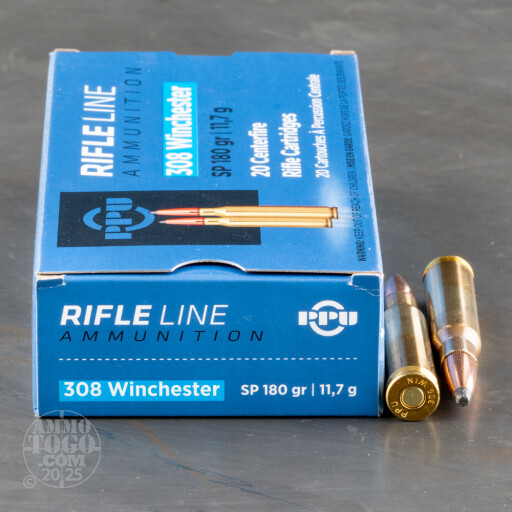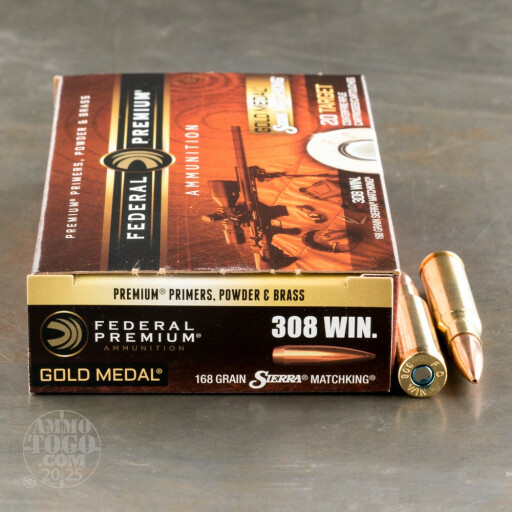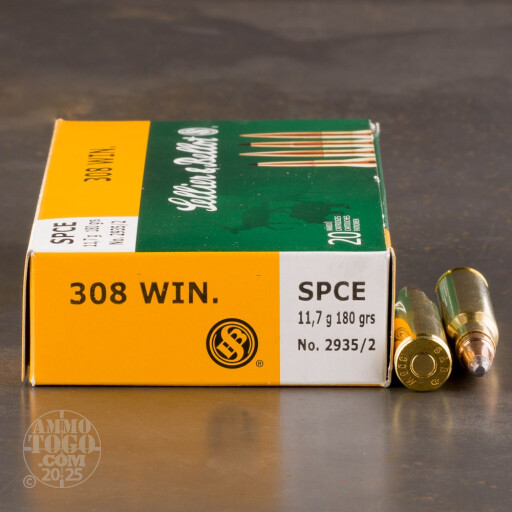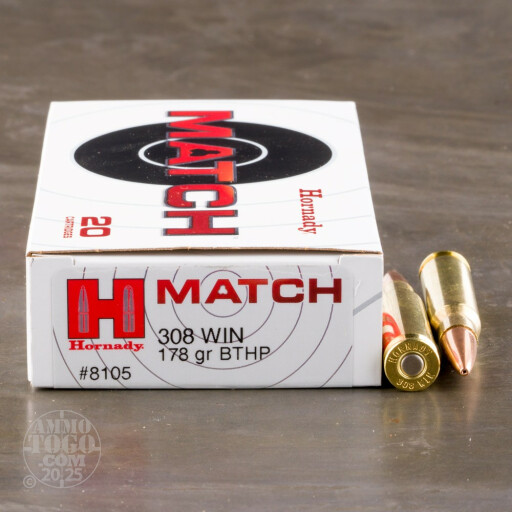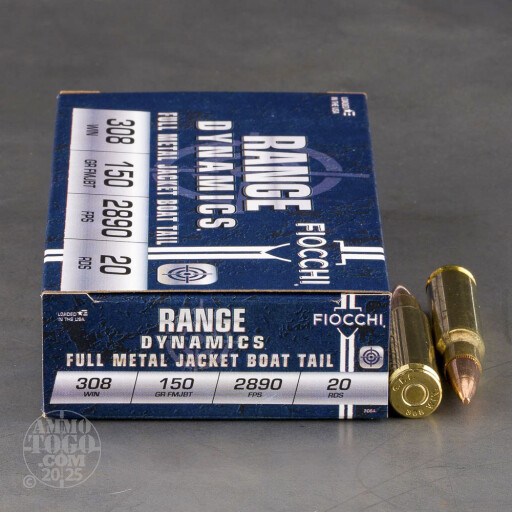Recommendations for 308 twist rate and how your choice of ammo can impact performance along with your barrel.
The .308 Winchester is one of the most capable and versatile cartridges available on the market. Most users can shoot accurately at 100 yards with the .308. Even precision shots at 200 or 300 yards, with practice and knowledge, can be reached. Dedicated shooters can even use the round for distances of 500 yards or more.
But the longer you reach with the .308 Winchester, the more you need to understand twist rates.
What is Twist Rate?
If you are an experienced shooter, especially a long-range target-shooter or hunter, you likely already know about twist rate. However, it helps to review this important factor for distance rifle shooting.
“Twist rate” simply refers to the tightness of the spirals inside the barrel. We express twist rate in the distance to complete a full, 360-degree revolution. For example, a 1/7 twist rate, a fairly common ratio, takes seven inches for the spirals, or “rifling,” to complete one full spin. A 1/12 twist rate (one of the most common for .308 barrels) takes 12 inches to complete a full spin.
When discussing twist rate, shooters often throw around terms like “fast,” “slow,” “tight,” and “loose.” (Especially “fast” and “slow.”) A fast or tight twist rate is one where the spin is completed in a shorter distance. (It completes a revolution in a tight distance and results in a fast spin.) A slow spin rate takes a longer distance. A 1/5 rate could be considered “fast,” while a 1/14 rate would be “slow” or “loose” by comparison.
Common .308 Rifle Twist Rates
For rifles chambered for .308 Winchester, as well as the 7.62×51 NATO, the .308’s military sibling, twist rates can range from 1/14 to 1/7 for custom products. Most, however, will be somewhere around 1/10 through 1/12. Choosing the right one for your specific needs, however, may take a little research on your part.
Twist rate, by itself, is far from the only factor that matters in accuracy and a bullet’s flight stability. But it is an important factor, one all rifle shootrs need to understand, at least on a basic level. And because the .308 Winchester round can be a capable long-distance cartridge, it’s especially important for users of this round.
The Connection Between Twist Rate and Bullet Length (Not Weight)
Many people assume that the heavier the bullet weight, the tighter your twist length should be. This is not perfectly accurate, although it’s not wrong. What really matters is the bullet’s length. Generally speaking, a longer projectile needs a tighter, faster spin to maintain flight stability. So if you are shooting a bullet from a .308 that is longer in overall length, you’re going to need something tighter.
Of course, a longer bullet is, generally speaking, a heavier bullet, so it’s easy to see why bullet weight and length are often connected. The connection, however, is indirect.
What Happens When Your 308 Twist Rate is Wrong?
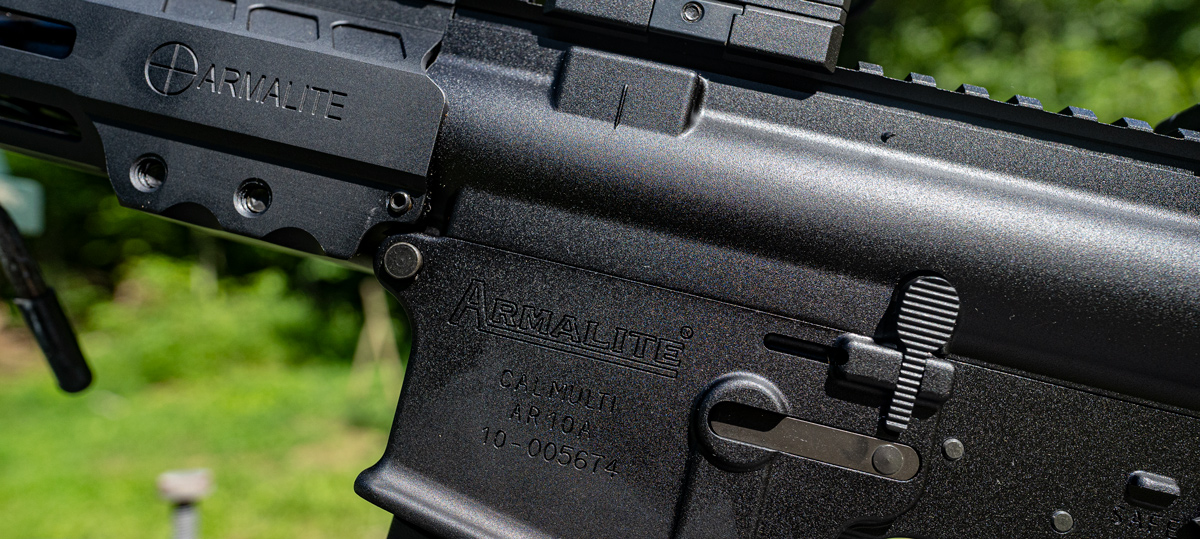
To understand the importance of an ideal twist rate, it helps to look at what happens when a twist rate is not right.
Twist Rate Too Slow
If the twist rate is too slow, as in it takes a longer distance for the spiraling to make full rotation. That case, the bullet will not be spinning fast enough. It won’t have enough rotational speed, so it won’t have the same level of stability. (To use the typical analogy, it won’t fly through the air like a perfect football pass in a tight spiral.)
Twist Rate Too Fast
Likewise, if the spiral is too fast, it throws the bullet off it’s equilibrium. It will spin too fast and become unstable in flight. Also, while this has not been researched, it seems possible that an extremely tight spiral would create greater resistance in the barrel, potentially reducing bullet speed.
When your .308 rifle (or any rifle, for that matter) has the wrong twist rate, it can create significant issues for overall performance. Whether the spiral is too fast or two slow, one of the most common signs of a bad twist rate is “keyholeing.”
Imagine a typical bullet hole in a piece of paper. It’s a nice, round punch or tear in the target because the bullet hit the paper nose first and went straight through. However, when twist rate is off, the bullet becomes unstable in flight and will begin to roll, turn, and tumble like (again, the football analogy) a bad pass from a quarterback. This tumbling in mid-flight makes the bullet hit the target at all sorts of angles, usually on it’s side creating a keyhole-like puncture in the target.
If you are having trouble with accuracy, and you see keyhole-shaped punctures instead of nice round holes, the twist rate is probably not right for the bullet you are using.
Best Twist Rates for Certain Weights
Everything we have discussed so far is universal to all forms of rifles and pistols; even rimfire rounds need ideal twist rates.
But what about your .308?
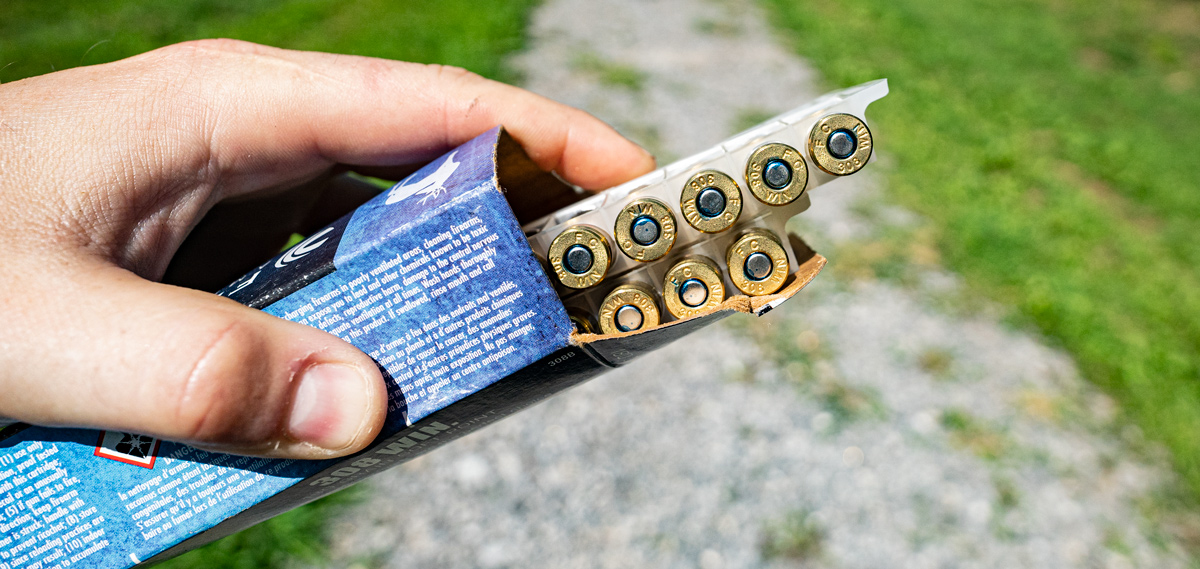
Whether you are purchasing a new rifle or need a new barrel for your trusted .308, finding the right twist rate will largely depend on how you plan to use the rifle.
All-Around, General Use:
1/11 through 1/12
In all honesty, a barrel with a 1/11 or 1/12 twist rate for an all-purpose .308 Winchester rifle will likely suit your needs just fine. In fact, most would likely recommend 1/12 or 1/11 for your general-use gun, but if there is a chance you’ll use the rifle on large- or medium-size game hunting, a 1/10 would work well for this purpose while still delivering reliable performance for other uses.
Long Distance Shooting with Light Bullets:
1/12
If you will be using the rifle strictly for target shooting or smaller game, a 1/12 will probably be ideal. Most users will find the 1/12 to be best for light bullets, so if you are participating in shooting competitions with match ammo or simply enjoy shooting smaller, affordable rounds as a hobby, you may want a 1/12 twist. Light .308 cartridges for varmint hunting, such as the 110-grain Nosler Varmageddon, would also benefit from a 1/12 twist rate.
Hunting with Long, Heavy Bullets
As we discussed, the longer the bullet, the faster the twist you will need. Of course, heavy bullets are often longer, which translates into tighter spirals for ideal stability. For a .308 or 7.62 rifle that will be used for hunting with long, heavy bullets, the best twist rate is likely 1/10. Federal Fusion’s 180-grain .308 ammo or Winchester’s 180-grain Super-X Power Point ammo, for example, would probably perform better with a 1/10 twist rate.
Twist rate can make a big difference in your .308 rifle’s performance. But if you stick with a twist rate between 1/10 and 1/12, which is the rate for most products, you’ll likely maintain consistent bullet stability.
If you need reliable .308 Winchester and 7.62 NATO ammunition, visit ammotogo.com and find the right cartridges for all your shooting hobbies!
